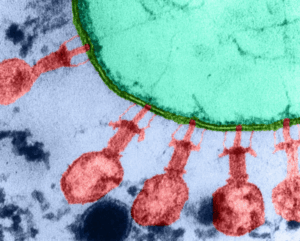What is Autism Spectrum Disorder, and what implications of behavioral therapy can be used to treat it?
Autism Spectrum Disorder (ASD) is a neurological and developmental disorder which impairs social, communicational, and behavioral skills (1, 2). The Centers for Disease Control and Prevention (CDC) estimates that ASD affects 1 in 36 children and 1 in 45 adults in the United States (3). Autism is classified as a spectrum disorder and therefore includes multiple previous diagnoses of autism (Asperger’s, autistic disorder, and persuasive disorder, among others). Autism is typically described from levels one to three, with one classified as “requiring support,” and three classified as “requiring substantial support” (4). The implementation of a spectrum to describe the disorder accounts for both the wide variation in symptom types and the severity of those symptoms (1).
The primary cause of autism is currently unknown, but researchers suggest that both genetic and environmental factors contribute to ASD. For instance, mutations in genes such as the ANK2 gene, which codes for ankyrin-B, could be correlated with Autism disorder. Ankyrin-B organizes the structure of cells and contributes to the cell cycle and cell migration (especially in brain and cardiac muscle cells) (5, 6, 7).
Understanding ASD. https://oromentalhealth.com/blogs/news/autism-spectrum-disorder-a-comprehensive-overview
Several types of treatment for ASD exist. To name a few, there are behavioral, developmental, educational, social-relational, pharmacological, psychological, and complementary/alternative therapies (8). This article focuses on behavioral therapy and how it is used to treat autism.
Behavioral therapy for autism is often based on a method called Applied Behavior Analysis (ABA). ABA follows the approach of positive reinforcement. This strategy encourages positive behaviors: when one performs them, they are often granted with a reward. This reward system motivates repeated positive behaviors (9). Some different types of ABA methods are Positive Behavioral and Support (PBS), Pivotal Response Training (PRT), Early Intensive Behavioral Intervention (EIBI), and Discrete Trial Teaching (DTT) (10).
Positive Behavioral and Support (PBS) is a community-based approach that encourages positive social skills. This method focuses on the idea that if students are taught new ways of communication, their wellbeing and interaction with others will be improved. The use of a larger group to demonstrate and foster positive behavior and communication allows those receiving therapy to practice their skills without negative or harmful behavior from others. This therapy requires planning and structured play, as all group participants need to demonstrate positive behavior (11).
Pivotal Response Training (PRT) is play-based intervention which focuses on “pivotal” areas of development. The Stanford Autism Center labels these areas of development as “motivation, responsivity to multiple cues, self-management, and social initiations” (12). For instance, PRT could look like the child starting a conversation with a teacher, which is defined as social initiation. The student could also try to express their want for a toy, and be rewarded with time to play with that toy (motivation) (13). PRT is a more individualized intervention method—for instance, between a teacher and student, or a parent/guardian and child—rather than a group-based therapy. The technique is often implemented at home and in other natural environments such as school. The goal of this program is to develop the child’s social interactions and behavioral skills, since it focuses on parts of their development that will improve a wide range of behaviors (14).
Early Intensive Behavioral Intervention (EIBI) and Discrete Trial Teaching (DTT) are often used simultaneously. EIBI is an individualized behavior instruction approach that focuses on developing new skills to combat “challenge” behaviors. This approach is very time-consuming and usually takes 20 to 40 hours per week (15). Lessons are typically conducted with a teacher in a comfortable setting for the child. DTT is often paired with this method, since it uses instruction, broken down into simple steps, to teach a new behavior (8).
While there is no “cure” for ASD, behavioral therapy is a technique that has proven beneficial for many children suffering from behavioral and social challenges. As scientists continue to learn more about the causes of ASD and how it could be prevented, the development of these therapies becomes increasingly important.
Bibliography:
- (2024, February) Autism Spectrum Disorder. National Institute of Mental Health (NIMH). Retrieved from https://www.nimh.nih.gov/health/topics/autism-spectrum-disorders-asd.
- (2017) Autism. U.S. Department of Labor (DOL). Retrieved from https://www.dol.gov/agencies/odep/program-areas/autism
- (2024) Autism spectrum disorder (ASD). Autism Speaks. Retrieved from https://www.autismspeaks.org/what-autism
- (2024) ASD levels of severity. Autism Speaks. Retrieved from https://www.autismspeaks.org/levels-of-autism
- (2024) What causes autism? Autism Speaks. Retrieved from https://www.autismspeaks.org/what-causes-autism
- (2021) Autism Spectrum Disorder: MedlinePlus Genetics. Medlineplus.gov. Retrieved from https://medlineplus.gov/genetics/condition/autism-spectrum-disorder/#causes
- (2024) ANK2 Gene: MedlinePlus Genetics. Medlineplus.gov.: Retrieved from https://medlineplus.gov/genetics/gene/ank2
- (2024, May 16) Treatment and Intervention for Autism Spectrum Disorder. CDC. Retrieved from https://www.cdc.gov/autism/treatment/index.html#:~:text=Complementary%20and%20alternative-,Behavioral%20approaches,-Behavioral%20approaches%20focus
- (2024) Applied Behavior Analysis (ABA). Autism Speaks. Retrieved from https://www.autismspeaks.org/applied-behavior-analysis
- (2021, April 19) Behavioral Management Therapy for Autism. U.S. Department of Health and Human Services, Office of Communications. Retrieved from https://www.nichd.nih.gov/health/topics/autism/conditioninfo/treatments/behavioral-management
- (2023) What is Positive Behavior Support? Association for Positive Behavior Support. Retrieved from https://apbs.org/pbs/
- (2024) Stanford PRT Research and Training Program. Stanford Autism Center. Retrieved from https://med.stanford.edu/autismcenter/prt.html
- (2022) Pivotal Response Treatment. Yale Medicine. Retrieved from https://www.yalemedicine.org/conditions/pivotal-response-treatment#:~:text=PRT%20is%20play%2Dbased%20and,to%20interact%2C%E2%80%9D%20Ventola%20says.
- (2017) Pivotal Response Treatment (PRT). Autism Speaks. Retrieved from https://www.autismspeaks.org/pivotal-response-treatment-prt
- (2020) Early Intensive Behavioral Intervention/Treatment. Association for Science in Autism Treatment. Retrieved from https://asatonline.org/for-parents/learn-more-about-specific-treatments/early-intensive-behavioral-interventiontreatment-2/












Comments are closed.